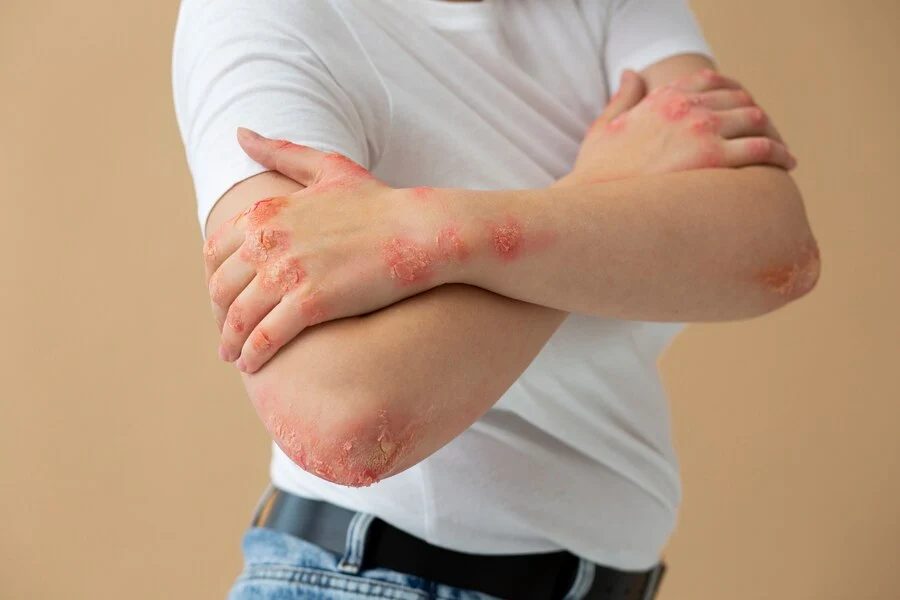
The monsoon season brings with it a refreshing change after scorching summer days, but it also ushers in a host of challenges, especially concerning health. One of the most prevalent issues during this time is fungal infections. The high humidity and damp conditions create an ideal breeding ground for various fungi that can lead to skin and respiratory infections. In this blog, we will delve into some of the common monsoon fungal infections and you can get some practical tips on how to prevent them from the leading dermatologist in Chembur - Dr Vedant Ghuse.
Athlete's foot is a fungal infection that primarily affects the skin between the toes. It thrives in warm and moist environments, making monsoon season a prime time for its occurrence. The common symptoms are burning, cracking and itching of the skin. Ensure to keep your feet dry and clean to avoid athlete’s foot. Make sure to wash and thoroughly dry your feet after getting wet. Opt for breathable footwear and change socks frequently to reduce moisture retention.
Ringworm is a contagious fungal infection that presents as circular, red, and itchy rashes on various parts of the body. It can spread through direct contact with an infected person or animal, or by touching contaminated surfaces. To prevent ringworm, maintain good hygiene practices, avoid sharing personal items, and wash your hands regularly. Keep your living spaces clean and dry, as fungi thrive in damp environments.
Fungal nail infections are characterized by thickened, discoloured, and brittle nails. They often occur due to prolonged exposure to moisture, making monsoons a prime time for their development. To prevent fungal nail infections every skin specialist near me that you search for would suggest to keep your nails clean and trimmed. Avoid prolonged exposure to wet conditions and make sure to dry your feet and hands thoroughly after coming in contact with water. Choose open-toed footwear whenever possible to promote ventilation.
Candidiasis, commonly known as a yeast infection, can affect various body parts, including the mouth (oral thrush) and genital area. To prevent candidiasis, maintain proper hygiene, especially in sensitive areas. Wear breathable and loose-fitting clothing, avoid using scented products in the genital area, and consume a balanced diet to support your body's natural defence mechanisms.
Aspergillosis is a respiratory fungal infection caused by inhaling airborne spores of the Aspergillus fungus. Wheezing, difficulty in breathing and coughing are some of the common symptoms that one can experience. To reduce the risk of aspergillosis, avoid areas with high mould concentrations, such as damp basements and areas with poor ventilation. Use air purifiers and dehumidifiers to maintain indoor air quality, and keep windows and doors closed during heavy rainfall to prevent spores from entering your living space.
While monsoon season brings much-needed relief from the heat, it also brings a heightened risk of fungal infections due to the humid and damp conditions. By following proper hygiene practices, maintaining cleanliness in living spaces, and making mindful choices in clothing and footwear, you can significantly reduce your susceptibility to these common fungal infections. Ensure to visit the best dermatology clinic near me that you can search for and get yourself treated if you may have contracted an infection.